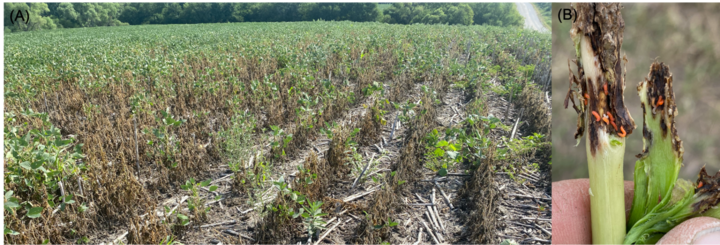
For some east-central Nebraska soybean farmers, the 2020 season was a brutal realization of the potential for soybean gall midge to cause injury (Figure 1) and yield loss in soybean fields. As a new species, the road to find successful management strategies is going to be long and difficult. The strong support from the Nebraska Soybean Board along with the North Central Soybean Research Program has provided the framework to push hard to develop new management strategies and better understand the threat in front of us.
As part of these efforts, the University of Nebraska-Lincoln, along with Iowa State University and the University of Minnesota, developed a three-part webinar series on the identification, biology and current management strategies for soybean gall midge. The webinars are freely available on the Soybean Gall Midge Alert Website. If you are new to soybean gall midge and want real-time alerts on the emergence of adults this spring, scouting tips, management information, or updates on its distribution, then sign up for alerts from the Soybean Gall Midge website. These alerts can be sent as an automated phone call, text message and email, and you are welcome to opt out at any time.
In general, no management intervention is needed for soybean gall midge unless notable yield losses occurred in an adjacent soybean field the previous year. Cultural tactics like mowing field borders or tillage have shown some potential, but further studies are needed to determine the role of these tactics in soybean gall midge management. Foliar applications were hindered during the 2020 season because of the long duration of adult emergence from last year’s soybean, limiting their potential to protect yields. Additional strategies for management have been tested and some new strategies are planned for the 2021 season. For more information on current strategies, see the webinar on management on the soybeangallmidge.org website.
